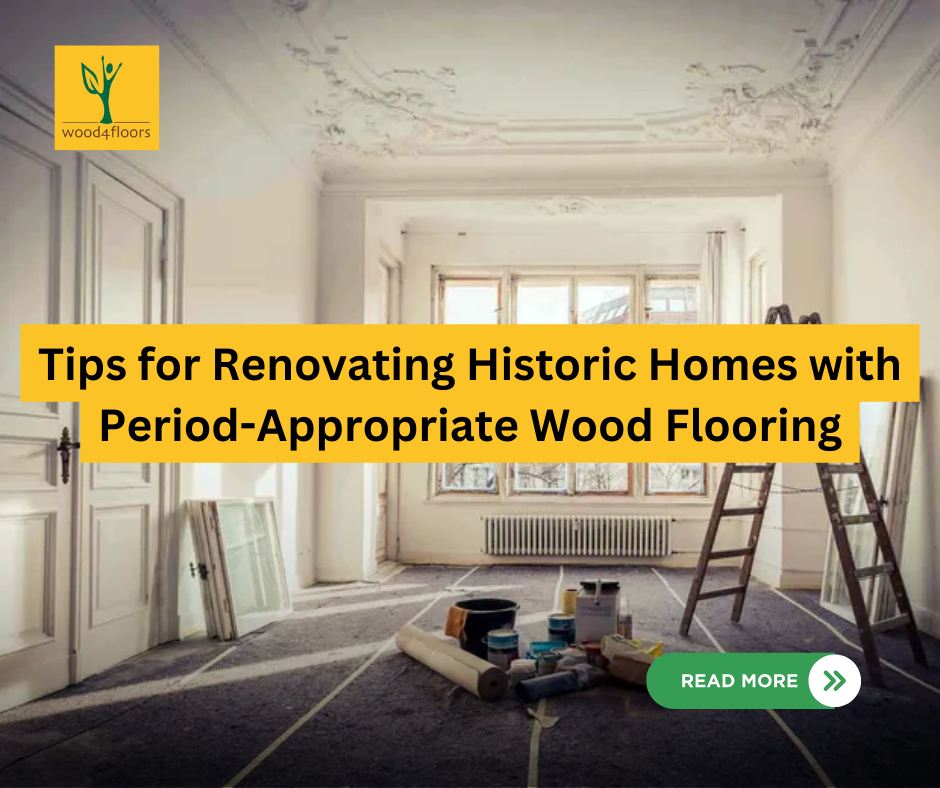Embarking on a journey to renovate a historic home is a unique and rewarding experience. Preserving the charm and authenticity of a bygone era requires careful consideration, especially when it comes to choosing the right flooring. In this blog post, we’ll explore valuable tips for renovating historic homes with period-appropriate wood flooring, ensuring that every step you take honors the timeless elegance of the past.
- Research and Respect the Era: Begin your renovation journey by delving into the history of your home. Understanding the architectural style and time period of its construction will guide your flooring choices. Different eras had distinct wood flooring preferences, ranging from wide-plank pine in Colonial homes to intricate parquet patterns in Victorian houses. Respecting the era ensures a seamless integration of period-appropriate wood flooring.
- Consult with Preservation Experts: Seek guidance from preservation experts or local historical societies. These professionals can provide valuable insights into the authentic flooring materials and styles used during the era your home represents. Collaborating with experts ensures that your renovation aligns with preservation standards, maintaining the integrity of your historic property.
- Reclaim and Restore: Consider using reclaimed wood for your period-appropriate flooring. Salvaged from old structures, reclaimed wood not only adds authenticity but also contributes to sustainable building practices. Restoration specialists can breathe new life into reclaimed wood, preserving its unique character while ensuring it meets modern durability standards.
- Opt for Traditional Wood Species: Select wood species that were commonly used during the era of your historic home. Oak, maple, and pine were popular choices in various periods, each offering distinct characteristics. Match the wood species to the style of your home for a cohesive and historically accurate look that stands the test of time.
- Embrace Handcrafted Techniques: Recreate the craftsmanship of the past by opting for handcrafted wood flooring. Hand-scraped, distressed, or wire-brushed finishes can replicate the imperfections and character of historical wood floors. This attention to detail adds authenticity and visual interest to your space.
- Consider Inlays and Borders: Elevate the elegance of your historic home by incorporating inlays and borders. Intricate patterns and designs were common in wood flooring during certain periods. Consult historical references or enlist the help of a skilled craftsman to recreate these embellishments, adding a touch of period-specific luxury to your home.
- Prioritize Compatibility and Durability: While authenticity is crucial, it’s equally important to prioritize compatibility and durability. Modern finishes and sealants can enhance the longevity of your period-appropriate wood flooring without compromising its historic charm. Ensure that the chosen materials can withstand the demands of contemporary living while retaining their timeless appeal.
Conclusion: Renovating a historic home with period-appropriate wood flooring is a labor of love that pays homage to the past. By researching, consulting experts, and embracing authentic materials and techniques, you can transform your home into a seamless blend of history and modern comfort. Let the timeless elegance of your period-appropriate wood flooring narrate the story of your historic home, creating a space that honors the past while embracing the future.


